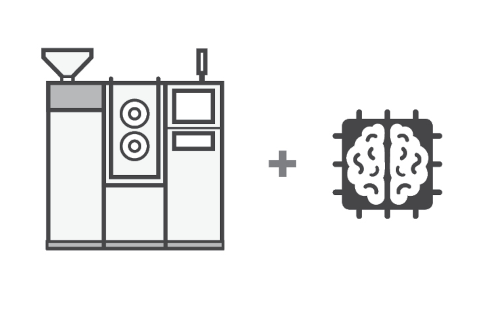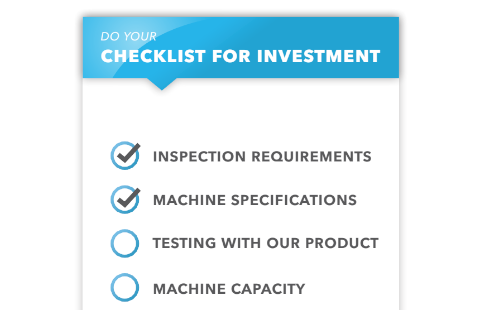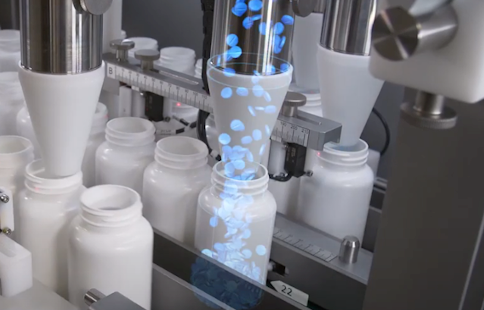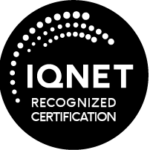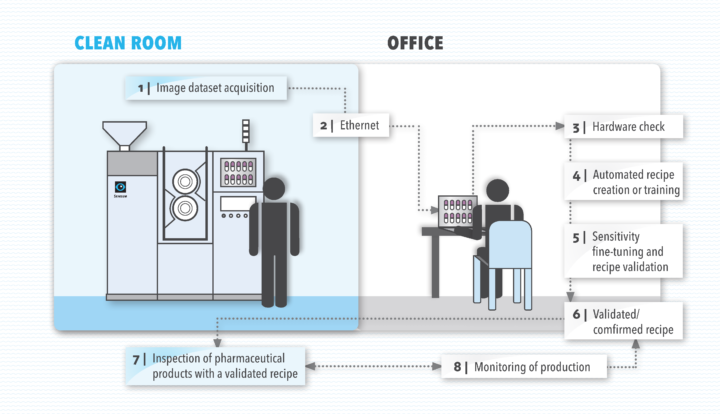
AUTOMATED INSPECTION PROCESS STILL NEEDS MANPOWER
Automated inspection of pharmaceutical products is performed with inspection machines. Because these machines and technologies are rapidly changing and evolving, there are many fundamentally different approaches. For example, some machines use conveyors for product manipulation, while others use a vacuum. Various imaging techniques are used for product inspection, often even more advanced techniques such as 3D imaging. The biggest difference between the various manufacturers is in the software and imaging algorithms, which are almost always proprietary and have no parallels across the different machine brands. Due to the wide variety of inspection technologies, pharmaceutical companies also need to invest in operators and support staff to efficiently handle the different inspection processes. Unfortunately, recent trends show that the pharmaceutical industry is struggling to find and retain new staff with adequate level of skills. In Sensum, we therefore propose an innovation that uses a pragmatic approach of industrial digital twins that can help pharmaceutical manufacturing to remain agile in these highly dynamic times.
USE OF DIGITAL TWINS IN INSPECTION
Digital twins are generally highly complex virtual systems that map physical systems and can be updated with real-time data. They use simulations and even machine learning for various tasks, such as process planning, optimization or even troubleshooting. In our innovation Set&Sim, we have set up a virtual environment of one or more Sensum machines to speed up machine setup and enable monitoring and evaluation of production performance. Set&Sim is directly connected to the machine via an Ethernet connection to exchange all relevant data such as process data, recipes, calibration and adjustment data. Set&Sim main features are:
• Set&Sim has visual appearance and all the functionalities of the software from the physical machine. Even though is installed on PC, Set&Sim gives the user an experience as if they were in the clean room operating the machine.
• Any recipe created, modified or fine-tuned in Set&Sim is directly applicable on the physical machine, without
any adjustment.
• Set&Sim provides additional simulation capabilities that simulate machine operation using raw image data from the physical machine. Simulations can be used for training, evaluation of past inspection runs or even predicting results, such as yield, of upcoming runs.
• Set&Sim has capabilities such as verifying recipes without actually running the machine.
The basic process data on inspection machine is images of the products being inspected. However, high-speed machines such as the Sensum SPINE tablet and capsule inspection machine take 18 images of each product at a rate of up to 200 products per second, meaning the machine can take up to 3600 images in one second. This amount of data cannot be transmitted in real time using the conventional IT infrastructure in pharmaceutical production. To get the most out of Set&Sim, we need these images, which of course can no longer be transmitted in real time. How can we use Set&Sim then?
OPERATING MACHINE HAND IN HAND WITH ITS DIGITAL TWIN
In pharmaceutical production today extraordinary throughputs are achieved, most of Sensum machines operate in 2-shift operation, many even in 3-shift operation. Set&Sim provides a direct benefit for tasks such as machine sensitivity adjustments, re-training machines, or inspection recipe creation for a completely new product in production. A typical application of Set&Sim:
1. Image database acquisition: In order to work efficiently with a digital tool like Set&Sim, the digital twin needs actual images of the product taken on the inspection system. SPINE has a feature that can capture raw images even if the operator does not have a recipe for the inspection. Creating a database of several hundred images can be done in seconds on the SPINE machine.
2. Transfer through standard network: The images are then transferred to the digital twin via Ethernet. After the images are transferred, the inspection machine is free for other activities. For example, the machine can continue to inspect other products for which recipes were created in the past.
3. Hardware check: In the next step, Set&Sim can be used to quickly evaluate the quality of the captured images. While this is a redundant process, as the operator should have done this when the image database was created, it can be seen as an additional check that the mechanical machine settings are correct.
4. Automated recipe creation: With the image database of the new product, Set&Sim can create a new recipe fully automatically under the supervision of the user. This step is fully automatic and requires no additional expertise from the user.
5. Sensitivity fine-tuning: The automatically created recipe still requires sensitivity fine-tuning, which is done by the user based on their quality requirements. The sensitivity settings are immediately applied to the image database, which helps us understand the impact of changes on the rejection and detection rates. The recipe can be finalized with verification on a test database, giving the quality experts the confidence to approve and confirm the recipe.
6. Recipe confirmation: The recipe operation is verified with the simulation, recipe can be confirmed by the users and then uploaded to the machine even if the machine is currently working with another product. The recipe waits to be used until the operator loads it from the machine’s recipe database.
7. Inspection of pharmaceutical products: Inspection on inspection machine is done without any conversion of the recipe or any adaptation as digital twin had all the information from the machine and was simulating the machine.
8. Monitoring: Set&Sim can also be used to monitor the ongoing operation of the machine, monitor various parameters and help optimize existing recipes.
Set&Sim for immediate improvement in production
Digital twins are becoming increasingly popular, but many of the digital twins are complex products. If you think about pharmaceutical production machines, inspection machines have more risks in the software settings, not in the hardware. With Set&Sim, we offer a pragmatic and innovative approach to address major risks, such as recipe setup and sensitivity settings, where Set&Sim does not incur high capital or labor costs and can bring immediate benefits to production:
1. Increased uptime and better OEE as many software adjustments and fine-tuning can be done offline / “atline” while the machine is used for regular production.
2. Easier management of quality and business risks; recipe fine tuning is a quality critical task as it aims to adjust the inspection so that the final result meets the AQL (Acceptance Quality Level) for visual quality. At the same time, fine-tuning needs to manage rejects, which can be a business risk because if the machine rejects products that can be accepted according to AQL, it suffers a direct loss of business.
3. Ability to conduct training outside the clean room for different levels of users without causing machine downtime due to training.
4. Less manpower in production, i.e. less time in the cleanroom for expert set-up, including the possibility of real-time monitoring.
5. Double check the quality of hardware settings by checking the quality of captured images.
6. Possibility of validation and confirmation of software settings (recipe) by different users (technologists, QA, …).
